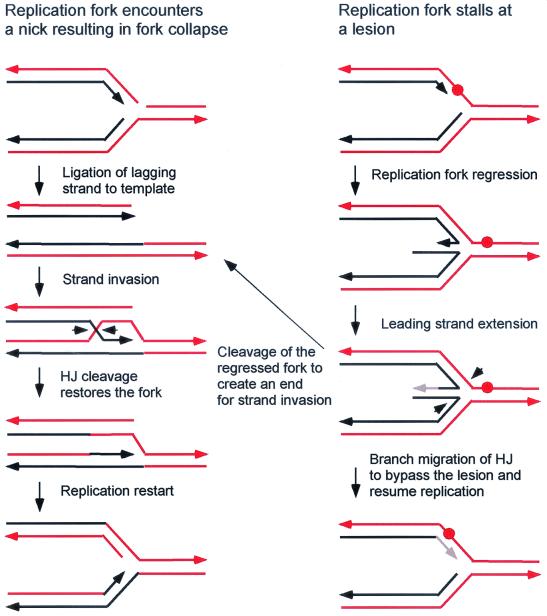FIG. 16.
Role of recombination in restoring collapsed or regressed replication forks. The replication fork collapses if it encounters a nick on the template strand. After ligation of the lagging strand to the template, the broken arm invades, forming a D-loop. Replication can then be primed from the invading strand. Resolution of the Holliday junction (HJ) restores the replication fork. A replication-blocking lesion stalls replication, and the fork regresses by pairing of the nascent strands. If the lagging strand has progressed ahead of the leading strand, the single-strand extension on the lagging strand can serve as a primer for synthesis of the leading strand. If the Holliday junction is cleaved, an end is made for strand invasion, as shown in the left panel. Alternatively, branch migration of the regressed fork can restore the replication fork.

